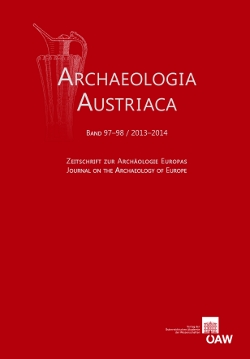
Archaeologia Austriaca 97-98/2013-2014, pp. 165-185, 2014/12/30
Zeitschrift zur Archäologie Europas
Journal on the Archaeology of Europe
Recent excavations at Gobelsburg in Lower Austria revealed six graves dating to the 5th century AD (migration period). Mineralized structures adhering to some metal artefacts as well as tiny fragments of iron were found, giving precious insights into organic materials which were used within the burials. They are a valuable source for basic research about textiles, leather, fur and other materials. Among the textiles, various qualities and weave structures were found; they differ from contemporary textiles found south of the Danube in the collapsing Roman Empire. The organic artefactual finds in the graves comprise the clothing of the buried persons as well as pouches made of textile. Preserved leather fragments are the remains of scabbards and belts. One grave contained residues of wild grass or cereals, which points to hay- or straw-bedding on which the deceased may have been laid down. This burial custom is a well-known feature within early medieval graves in southern Germany. Entomological remains from the same grave may show use of fruit or vegetables as grave offerings.
Keywords: Textil, Leder, Holz, entomologische Reste, botanische Reste, Grabfunde, Gobelsburg, Österreich, Völkerwanderungszeit